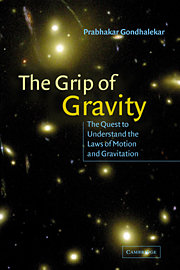Summary
Our world is ruled by two sets of laws: the laws of gravity and the laws of quantum mechanics. The laws of gravity describe the large structures in the universe such as the Earth, the solar system, stars, galaxies and the universe itself. These laws allow us to predict the path and motion of spacecraft and asteroids and also the evolution of the universe. The laws of quantum mechanics, on the other hand, describe the very small structures such as molecules, atoms and subatomic particles. They enable us to understand the three subatomic forces, lasers, CD players and nuclear weapons. One of the great puzzles of the twentieth century is that these two sets of laws, each employing a different set of mathematics and each making astonishingly accurate predictions in its own regime, should be so profoundly different and incompatible.
Quantum mechanics is a child of the twentieth century. Its origins can be traced back to the year 1900, when Planck proposed the particle nature of electromagnetic radiation to explain the black-body spectrum. The character of the laws of motion and the laws of gravity, on the other hand, has unfolded over a considerably longer period. Today, the concepts of mass, force and gravity are very familiar, but they are also deeply mysterious and are intimately linked to our understanding of motion. Historically motion was perhaps the first natural phenomenon to be investigated scientifically.
- Type
- Chapter
- Information
- The Grip of GravityThe Quest to Understand the Laws of Motion and Gravitation, pp. vii - xPublisher: Cambridge University PressPrint publication year: 2001

